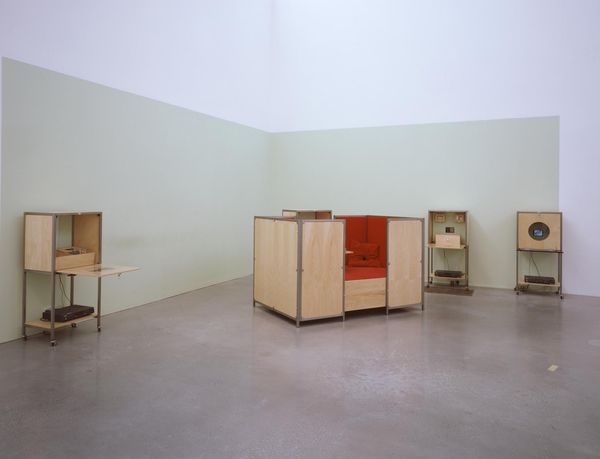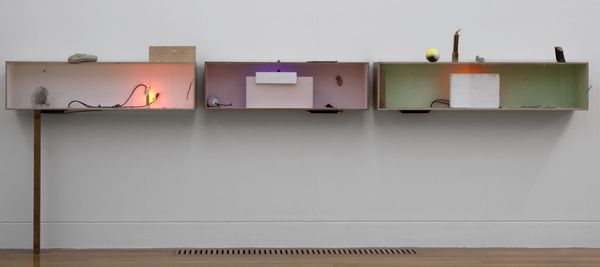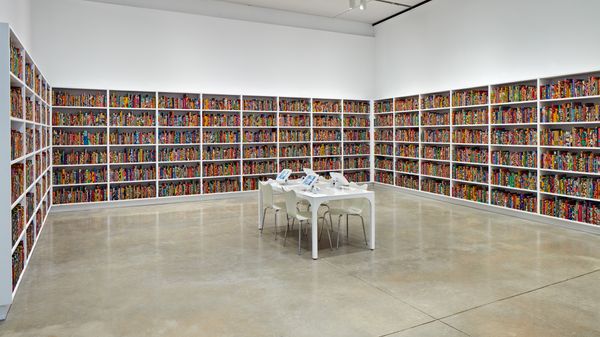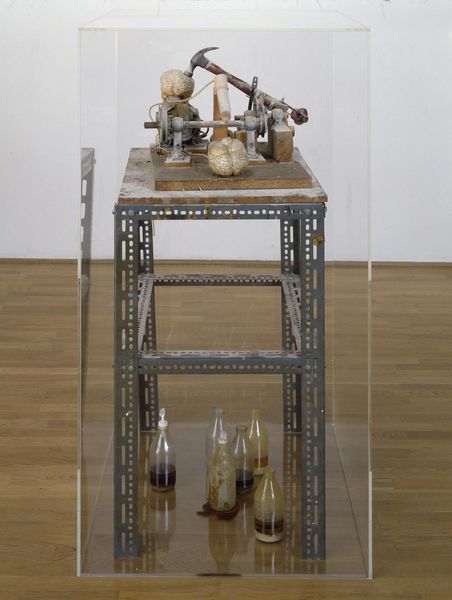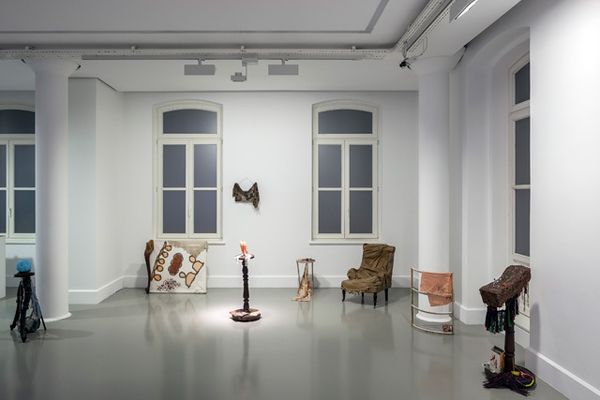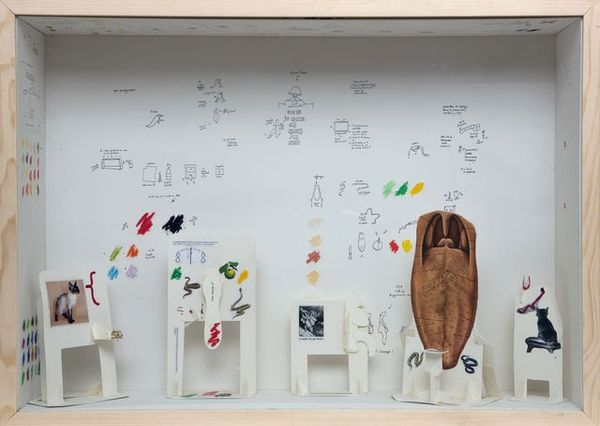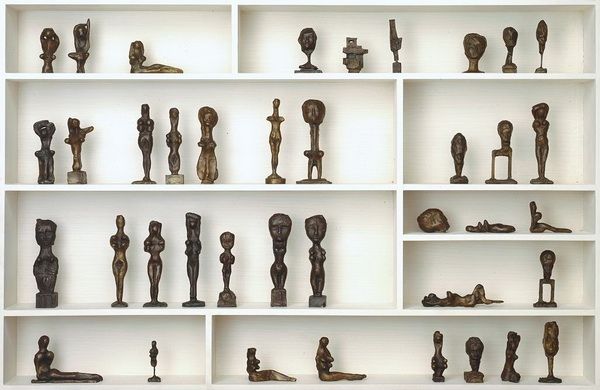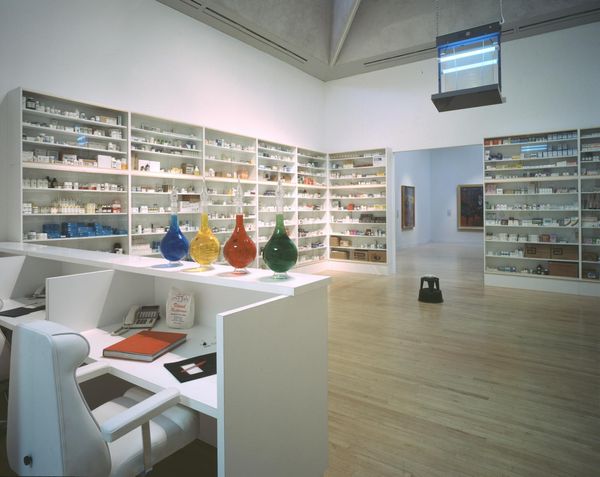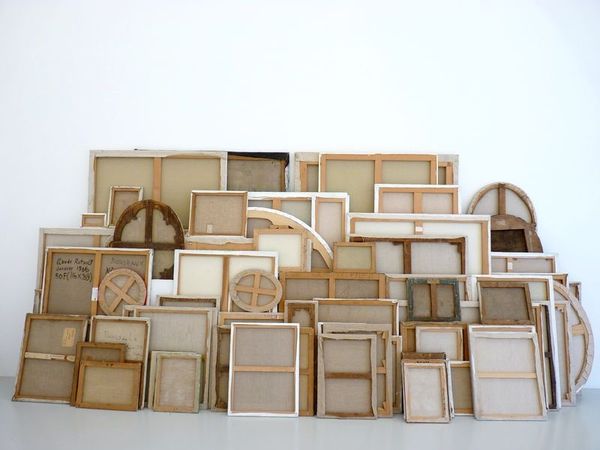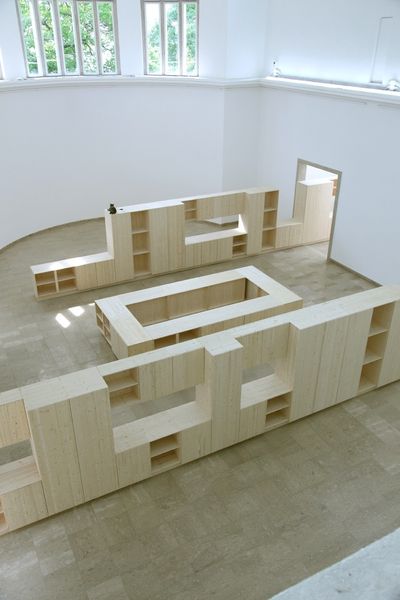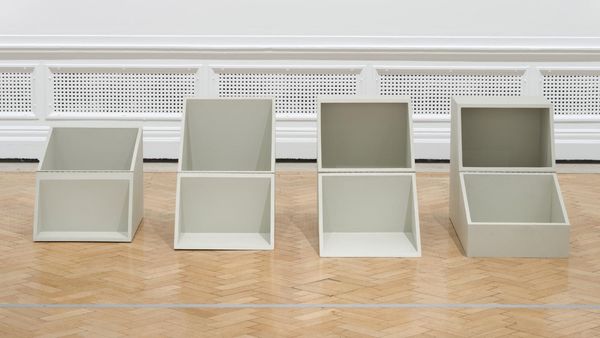
Dimensions: object (left vitrine, displayed not including objects): 2135 x 1530 x 472 mm object (central vitrine, displayed not including objects): 2745 x 1835 x 472 mm object (right vitrine, displayed, not including objects): 2135 x 1530 x 472 mm
Copyright: © Damien Hirst and Science Ltd. | CC-BY-NC-ND 4.0 DEED, Photo: Tate
Curator: Damien Hirst's "Trinity - Pharmacology, Physiology, Pathology" presents us with a rather clinical arrangement of anatomical models encased in three imposing vitrines. Quite a sight, isn’t it? Editor: A sight indeed! My first thought? It's like stepping into some ghostly Victorian-era museum, all hushed reverence and a touch of the macabre. Curator: Right, the sheer scale emphasizes display and categorization, echoing the history of medical collecting. The means of production here—the models themselves, the vitrines—speak to a complex interplay between science, commerce, and art. Editor: You know, there's this strange beauty, almost a playful morbidity, in taking these fragments and putting them on display. Makes you think about what we choose to reveal, and what we keep hidden, even from ourselves. Curator: Absolutely, and Hirst is keen to draw our attention to the commodification of the body and medical knowledge, playing with our cultural obsession with mortality. Editor: Well said. It’s a potent reminder of our own fragile existence, neatly packaged and displayed. Gives you pause, doesn't it? Curator: It does, offering us a chance to reflect on how we understand and interact with our physical selves. Editor: A fascinating, if slightly unnerving, exploration that definitely sticks with you.
Comments
http://www.tate.org.uk/art/artworks/hirst-trinity-pharmacology-physiology-pathology-ar00500
Join the conversation
Join millions of artists and users on Artera today and experience the ultimate creative platform.
Trinity – Pharmacology, Physiology, Pathology is a wall-mounted sculptural installation composed of three large glass fronted cabinets displayed in triptych formation, with the large central cabinet flanked by two equal sized smaller cabinets. Custom-made for the artist from white formica-covered MDF with identical steel fittings (handles and locks), the cabinets contain medical demonstration models – made of plastic, leather and wood – arranged on white shelves. The order in which the objects are arranged is aesthetic, rather than following any kind of logical or discursive rationale. Many items are repeated in two or all of the cabinets, or presented in several versions of the same thing. These include: enlarged eyeballs; foetuses in various stages of development both in and out of wombs; cross-sections of male and female reproductive organs; cross-sections of the skin with giant hair follicles; skulls – both adult and infant; enlarged teeth; and torsos with their skin removed to show the body’s internal organs and half the head sliced open to reveal the skull and part of the brain – two of these are brown skinned and stand side by side, evoking twins (the subject of ongoing fascination for Hirst). The cabinets also contain an enlarged brain; an enlarged heart; a pelvis and full set of vertebrae (painted various shades of green); an infant’s spine; hand, arm, leg and foot bones; an enlarged bisected kidney; a gynaecological model of a newborn infant; and a model of a woman’s lower torso, genitals and upper thighs. The largest object is a torso and head sliced horizontally into fifteen parts and hinged on a vertical stand so that they can be viewed separately.
